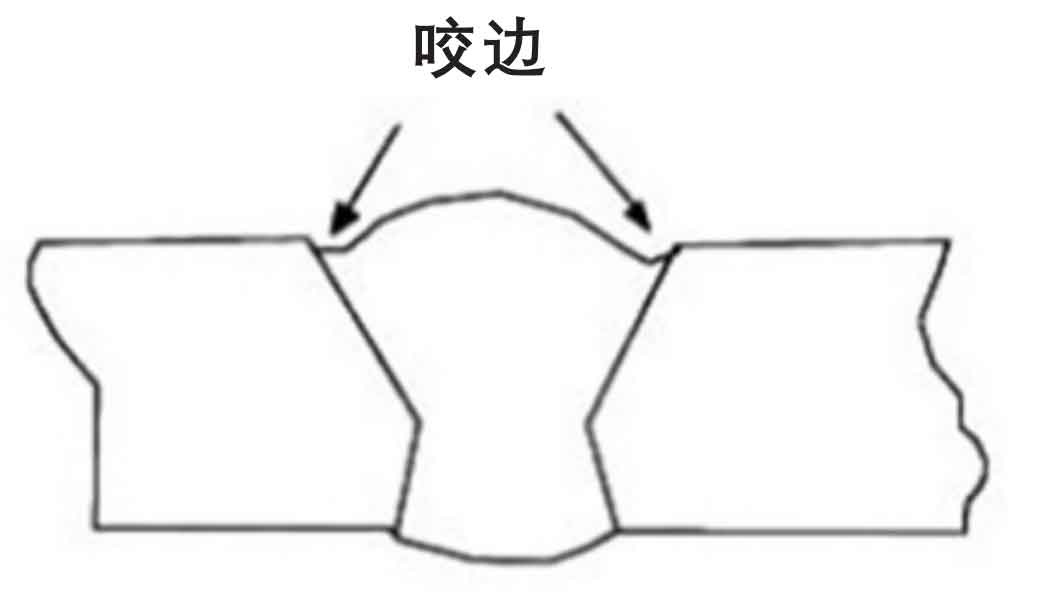Expert Techniques for Preventing Weld Undercut Efficiently
Expert Techniques for Preventing Weld Undercut Efficiently
Blog Article
Comprehending the Causes and Solutions for Undercut Welding in Steel Manufacture Processes
In the world of steel construction processes, the event of undercut welding poses a considerable difficulty that demands a thorough understanding of its reasons and viable solutions. The elaborate interplay of different aspects throughout welding operations can cause this unfavorable phenomenon, affecting the architectural integrity and total top quality of the welded joints - Preventing weld undercut. By studying the origin causes of undercut welding and exploring efficient therapeutic actions, fabricators can boost the criterion of their craftsmanship and guarantee the manufacturing of flawless metal parts
Typical Sources Of Undercut Welding
Frequently ignored in steel manufacture, undercut welding occurs due to numerous variables that demand thorough focus and expertise to be effectively reduced. In addition, improper welding methods, such as making use of the wrong welding angle or travel speed, can likewise add to damage formation. The option of welding parameters, such as voltage, existing, and wire feed rate, plays a considerable function in the occurrence of undercut welding.
Influence of Incorrect Welding Parameters
Inaccurate welding specifications can dramatically compromise the stability and quality of bonded joints in steel fabrication processes. The effect of incorrect welding criteria shows up in numerous means, bring about structural weak points and issues in the bonded parts. One crucial facet influenced by incorrect welding criteria is the penetration deepness of the weld. Inadequate heat input due to reduced welding currents or excessively high travel speeds can lead to inadequate combination between the base steels, leading to insufficient joint penetration and compromised bonds. Conversely, excessive warm input triggered by high welding currents or slow traveling speeds can lead to burn-through and excessive support, creating a brittle and unstable weld structure. Furthermore, wrong parameters such as inappropriate voltage setups or inaccurate electrode angles can contribute to erratic weld grain accounts, lack of blend, and boosted opportunities of problems like undercutting. As a result, precise attention to welding specifications is critical to ensure the manufacturing of high-grade welds with the wanted mechanical buildings and structural stability.
Effect of Improper Torch Angle
Incorrect torch angle in welding procedures can considerably influence the high quality and honesty of the last weld joints in metal manufacture processes. Damaging is an usual welding issue where a groove creates along the weld toe, deteriorating the joint and jeopardizing its architectural stability.
A torch angle that is too steep can lead to insufficient infiltration, insufficient blend, and boosted spatter. On the other hand, a lantern angle that is too superficial can result in too much penetration, burn-through, and distortion of the base material. Preventing weld undercut. Correct lantern angle is necessary for Source making certain regular weld top quality, strength, and appearance
To prevent undercutting and various other defects triggered by improper lantern angles, welders must be educated to preserve the appropriate lantern angle throughout the welding process. Regular surveillance and modification of torch angles throughout welding can aid attain audio welds with marginal problems.
Role of Inadequate Welding Methods

Another facet of insufficient welding techniques is inappropriate weld preparation. Poor cleaning of the base steels, wrong joint layout, or inadequate side prep work can all contribute to undercut welding. In addition, insufficient protecting gas protection or making use of the incorrect kind of gas can result in insufficient fusion and the formation of undercut flaws.
To attend to the duty of inadequate welding techniques in steel manufacture procedures, it is essential to offer comprehensive training for welders. Proper education and learning on welding specifications, joint prep work, and protecting gas option can help stop undercut welding and ensure premium welds in metal manufacture tasks.
Reliable Solutions for Undercut Welding
Dealing with undercut welding in metal fabrication needs implementing reliable options to boost weld top quality and architectural honesty. One of the key solutions to combat undercut is to change welding criteria such as voltage, current, and travel rate to make certain appropriate warm input and fusion. By fine-tuning these setups, welders can avoid extreme melting of the base steel and filler material, minimizing the likelihood of undercut development.
In addition, appropriate joint prep work is important in stopping undercut. Ensuring tidy base metal surface areas without contaminants and making use of the suitable bevel angle can aid promote far better description weld infiltration and minimize the threat of undercut - Preventing weld undercut. Employing ideal welding techniques, such as weaving or oscillating the torch, can additionally help in distributing warmth evenly and filling the weld joint sufficiently, lessening the opportunity of undercut issues
Moreover, selecting the right welding consumables, including electrodes and filler steels, is crucial in minimizing undercut. Utilizing materials with appropriate chemical compositions and mechanical properties can contribute to achieving audio welds with minimal undercut. Routine inspection and quality assurance actions should likewise be executed to find and deal with undercut concerns immediately, making Homepage certain the overall honesty of fabricated steel elements.

Verdict
In verdict, comprehending the causes and remedies for undercut welding in metal manufacture procedures is important for achieving top quality welds. By attending to typical causes such as inaccurate welding parameters, inappropriate lantern angle, and insufficient welding strategies, welders can avoid undercutting and guarantee solid, long lasting welds. It is vital to take note of these elements and execute reliable remedies to enhance the general welding procedure and last item high quality.

Report this page